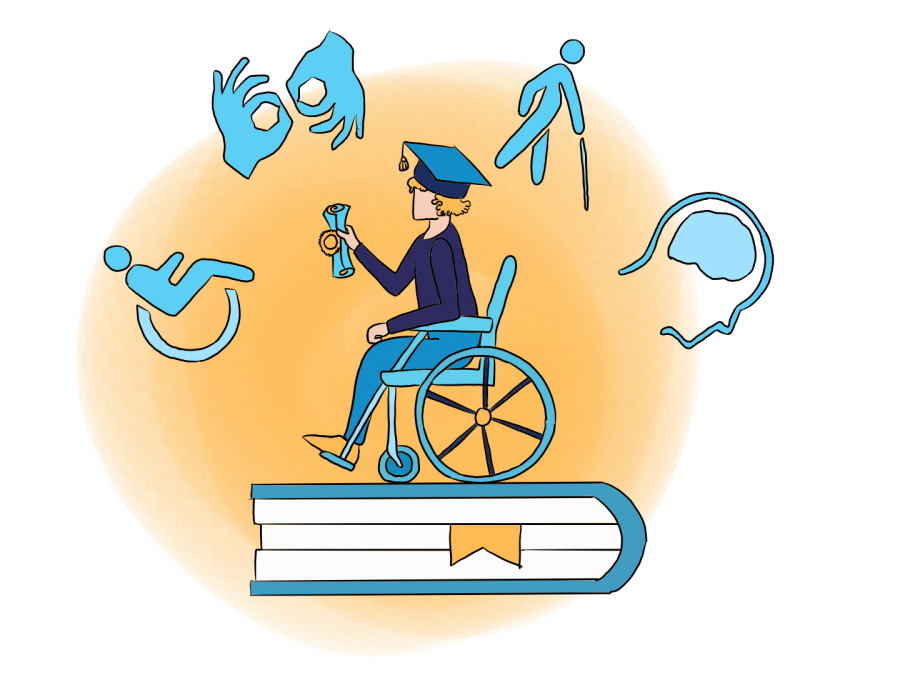Online learning increases accessibility for disabled students
May 5, 2021
While some students and professors are eager to return to normal operations after more than a year of mostly online classes, some disabled students at UT said certain features of online learning have made the college experience more accessible.
The physical accessibility of Zoom classes, relaxed attendance policies and lecture recordings have all contributed to a more equitable learning environment, and some of the thousands of registered UT disabled students said they want these accommodations to become permanent.
Before the pandemic, disabled students typically had to obtain accommodations from Services for Students with Disabilities to access lecture slides and class recordings. But now during the pandemic, many professors post these resources for everyone to see.
Caroline Graves, former president of the Disability Advocacy Student Coalition, said with online learning, she no longer needs to worry about navigating her wheelchair through inaccessible areas of campus to make it to class.
“My attendance is pretty great for online classes. I can just roll out of bed and be there. So that’s a lot easier,” said Graves, a government and public relations senior. “It’s also easier not to have to potentially be in an inaccessible classroom.”
She said recordings, which many professors now post more frequently, are helpful for students who might miss class for disability-related reasons.
“Expanding that program, or just keeping it in place (when in-person classes resume), I think that would be super helpful when possible, or at least posting notes online more comprehensively,” Graves said.
English sophomore Nellie Downie also said recorded lectures are a helpful resource, both for her attention deficit hyperactivity disorder and just for review.
“I definitely go back and watch lectures to see if there was any material that I missed, which often I do because I zone out,” Downie said. “When I’m about to have an exam or an essay or something like that, it’s good to go back and relisten to those discussions and those lectures.”
Some professors have also implemented more flexible attendance policies or done away with attendance grades altogether, which Downie said represents an opportunity to take a much-needed break.
“I have a lot of times where I question if I actually have the energy to go to my next class,” Downie said. “I constantly worry about attendance policies and if the professor will understand or if it’s just going to be a big debacle.”
According to Emily Shryock, assistant director of Services for Students with Disabilities, these changes do not only benefit disabled students.
“A lot of those things … are examples of Universal Design for Learning, which is a concept (where) you’re trying to provide flexibility and options,” Shryock said. “Universal Design for Learning has been around for longer than the pandemic.”
Shryock said Services for Students with Disabilities is collaborating with UT’s Faculty Innovation Center to consider what aspects of virtual learning might continue once UT returns to largely in-person learning.
“Having access to a recorded lecture or the slides, probably everybody’s going to benefit from that. It’s not just students with disabilities,” Shryock said. “The difference is that (disabled students) would have to request an accommodation letter … whereas now, it’s available for everybody.”



